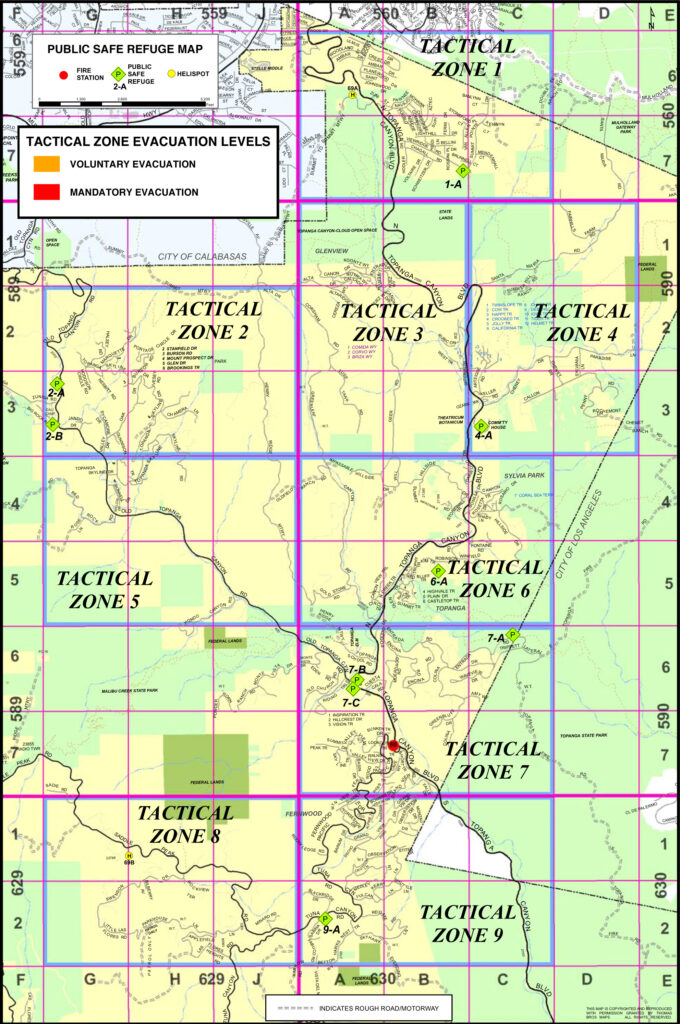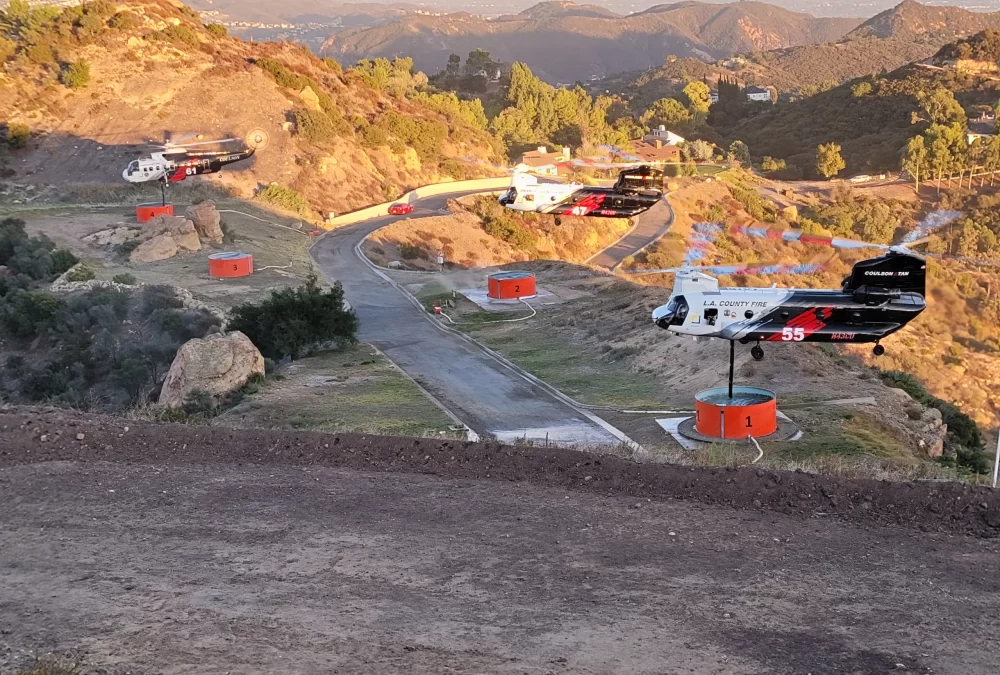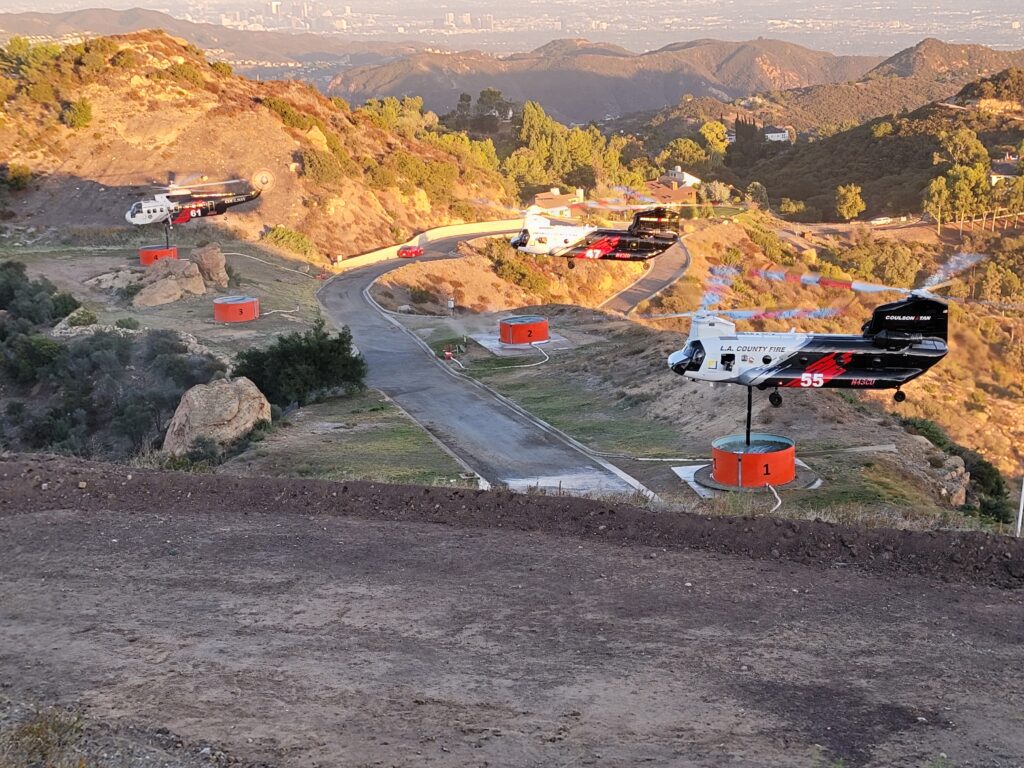
The three massive helitankers that are the core resources for the Quick Reaction Force, are back in town. This high-tech, highly efficient aerial firefighting team will be stationed in Southern California throughout peak wildfire season.
These three mammoth airships recently made their presence felt above Topanga during exercises at the 69 Bravo helistop. It’s an annual training Los Angeles County Fire Department event that takes place in October, when the specialized aircraft, leased from Coulson Aviation, arrive in Southern California for the season. The helitankers are based in Ventura, Los Angeles and Orange counties, one for each county, but they work together to provide integrated support, and if required, all three can be deployed together.
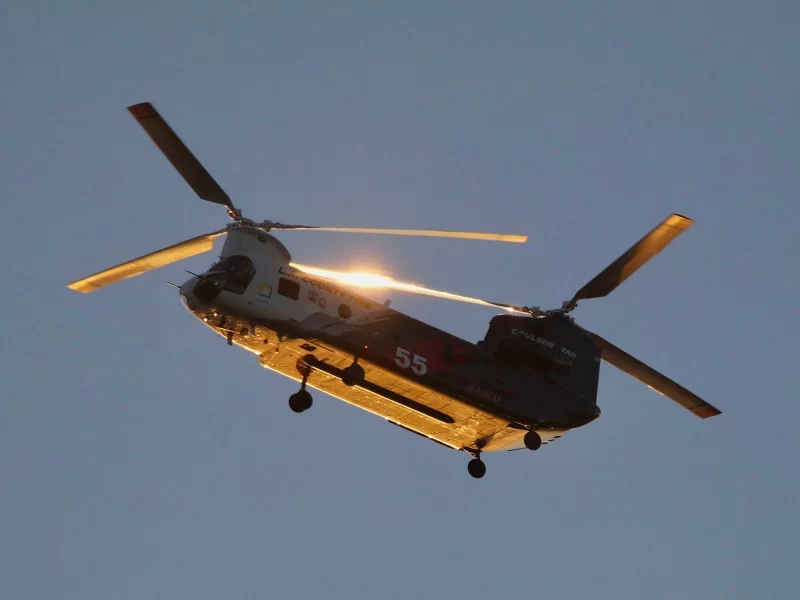
The Quick Reaction Force is one of the top fire fighting and fire suppression forces in the world, and that’s not an exaggeration. Each helitanker has a capacity of up to 3000 gallons of water or fire retardant gel and can hover-fill over 69 Bravo’s above-ground water reservoirs—otherwise known as pumpkins—in just 90 seconds. Unlike most other firefighting aircraft, they can operate day or night.
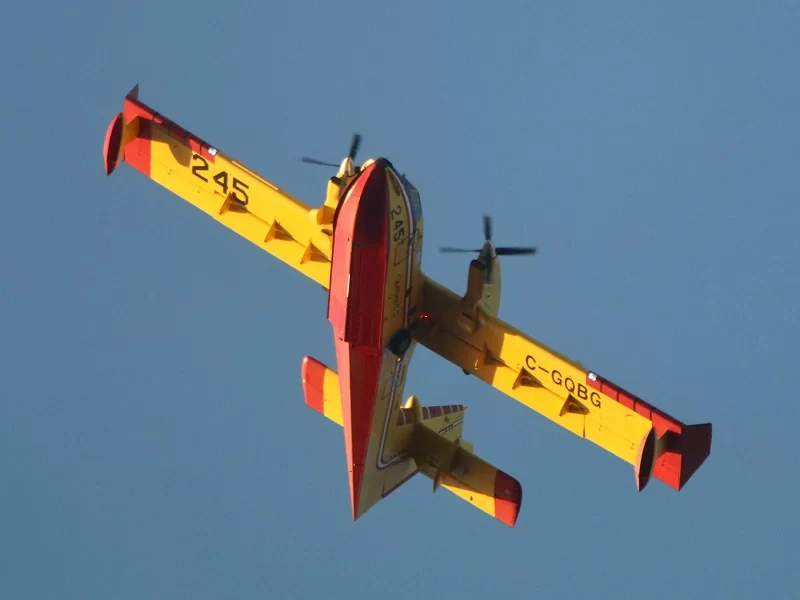
The program includes cutting edge aerial intelligence gathering aircraft that provide detailed real-time data, and the helitanker team works with other fire-bombing aircraft and with ground crews, providing essential data, with the goal of preventing small fires from becoming large.
Los Angeles County’s Helitanker 55 is a Chinook CH-47, one of the largest fire-fighting aircraft in the world. It’s based at Van Nuys airport and can be at the coast in minutes. The fire department has included the helitanker as a first response resource that responds to all vegetation fires, which means almost instant air support during any wildfire incident.
Night vision and the capacity to carry 3000 gallons at a time made a huge difference during the 2021 Tuna Canyon fire that broke out in the middle of a July night. In a two-hour period, the Los Angeles County helitanker dropped an estimated 37,600 gallons of water, working alongside the county aircraft. Refilling was done at nearby 69 Bravo at the top of Topanga Canyon, and the fire was stopped, despite rugged and challenging terrain, before it could spread into the Saddle Peak neighborhood, or farther west into Malibu.
The helitanker program is funded by Southern California Edison in an effort to prevent catastrophes like the 2018 Woolsey Fire. Currently, the helitankers are only in Southern California during peak fire season, but there is a strong push to keep them here all year. That’s good news for residents, as we enter what all the indicators suggest will be another severe drought season, and increasingly have to come to terms with the concept of wildfire as a year-round threat.
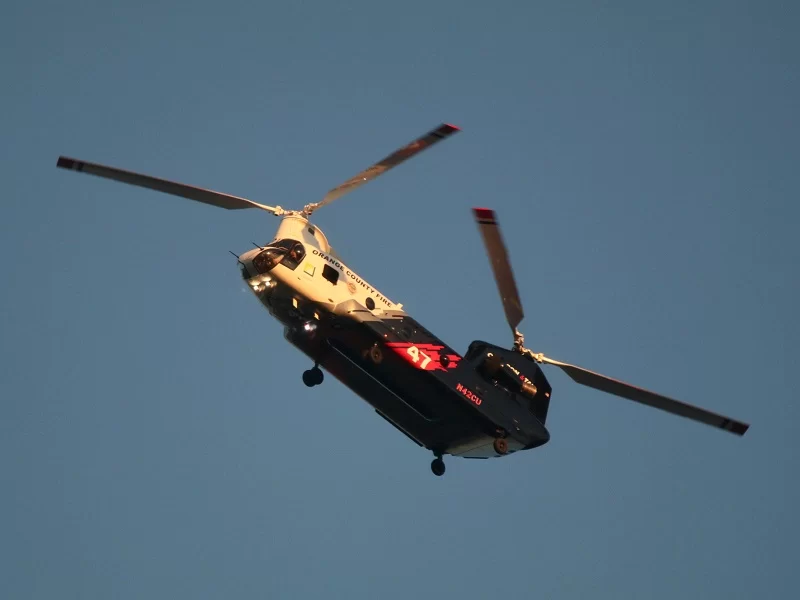
Having the helitankers and a resource like 69 Bravo has been described as a game changer, that makes everyone living in the vicinity of the Santa Monica Mountains a little safer, but it’s still essential to be prepared for wildfire and to have an evacuation plan. It’s estimated that it could take as long as seven hours to fully evacuate Topanga. Getting out early, especially for families with animals, small children, elderly relatives or individuals with disabilities, is still the best way to survive a wildfire emergency. Even with resources like Helitanker 55 on call this is going to be a challenging year, everyone who lives in the wildland interface needs to be prepared.
Learn more about 69 Bravo at www.69bravo.com
**Know your zone. Los Angeles County has broken up its part of the Santa Monica Mountains into emergency zones for evacuation preparedness. It’s important that everyone knows what Zone they are in. We’re including the Topanga map here—helistop 69 Bravo is the yellow dot on the left side of Zone 1—but there are also maps for other parts of unincorporated Los Angeles County, as well as the cities of Agoura Hills, Calabasas, Malibu and more. Visit community.zonehaven.com
